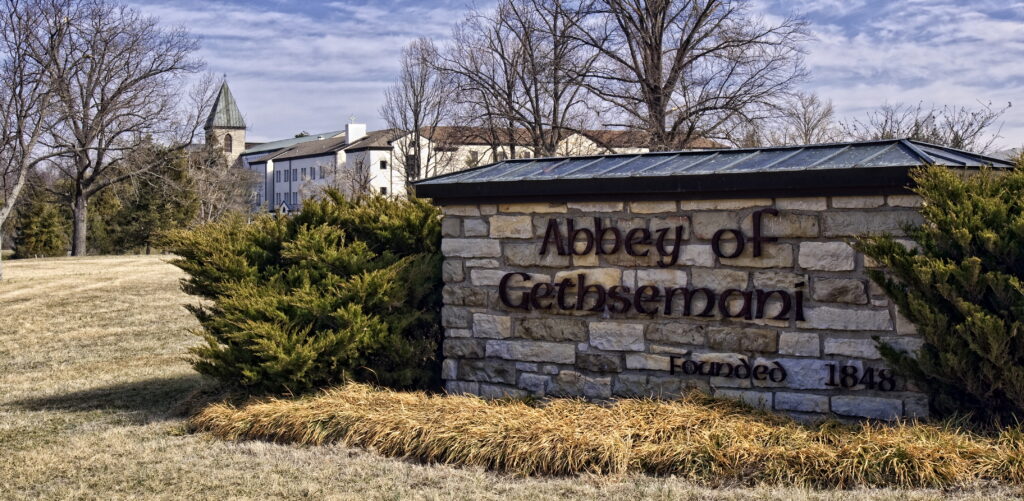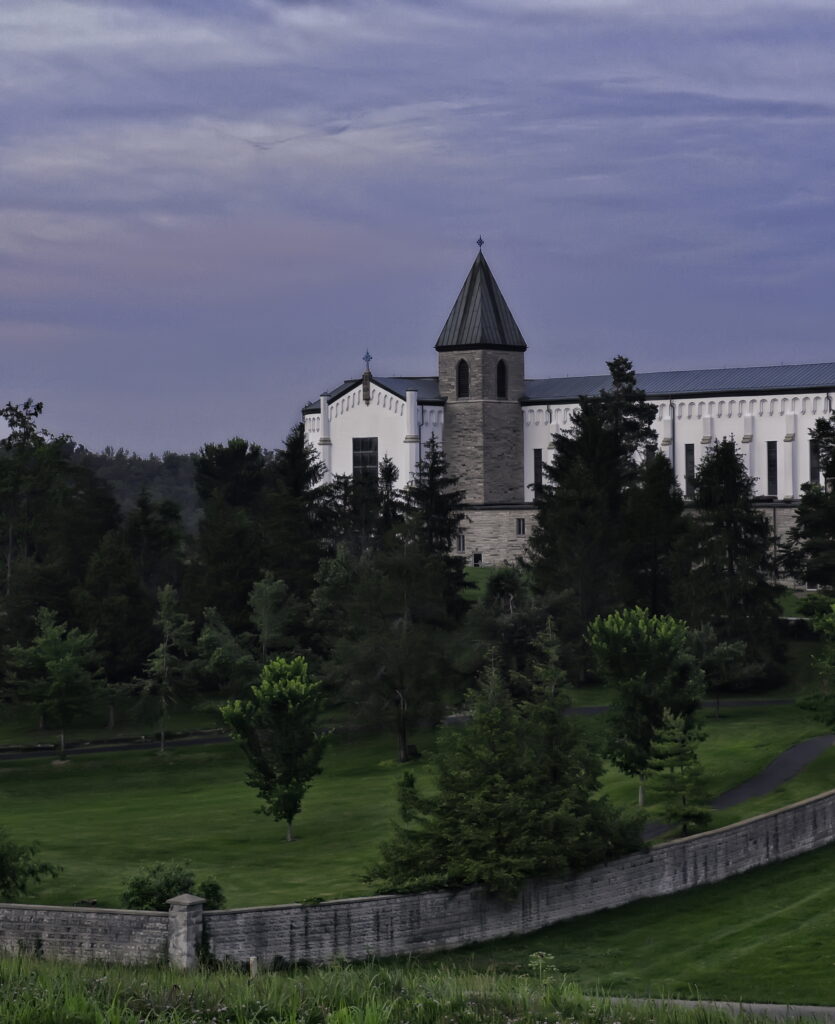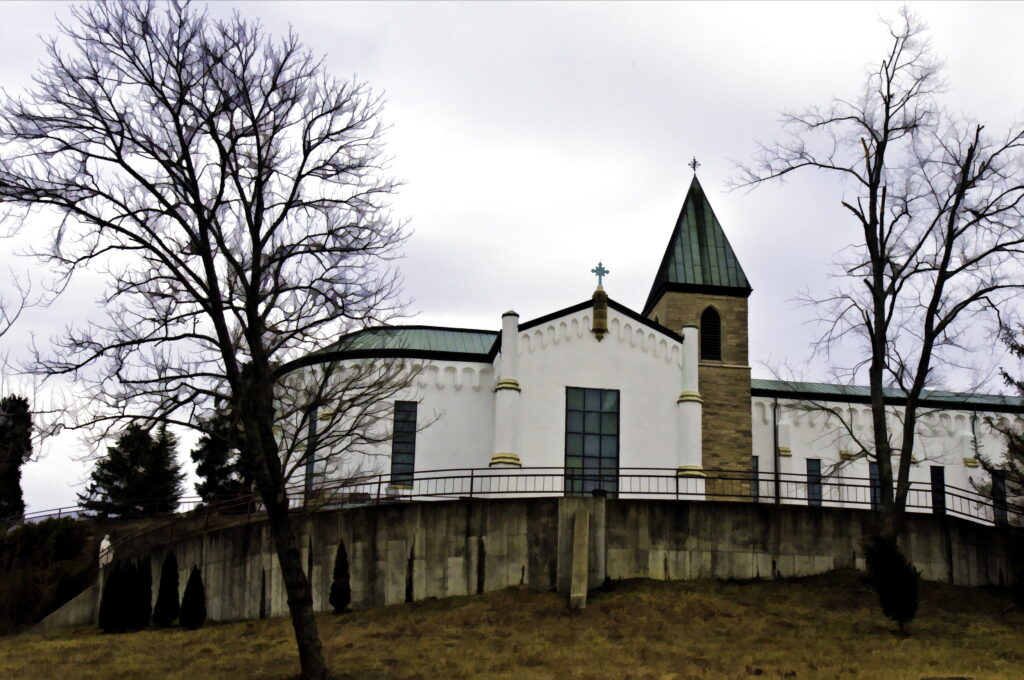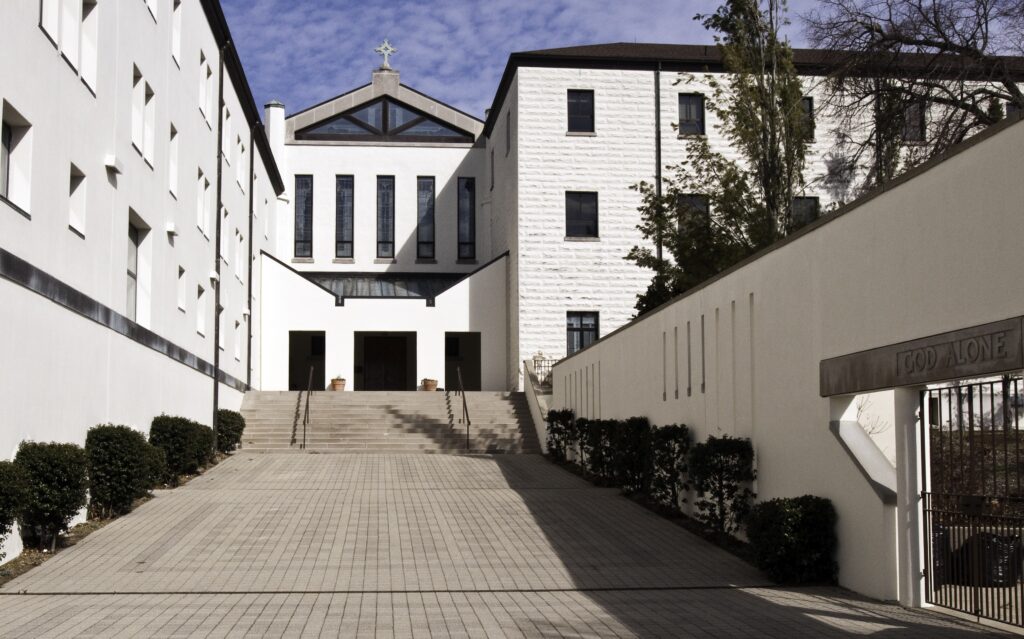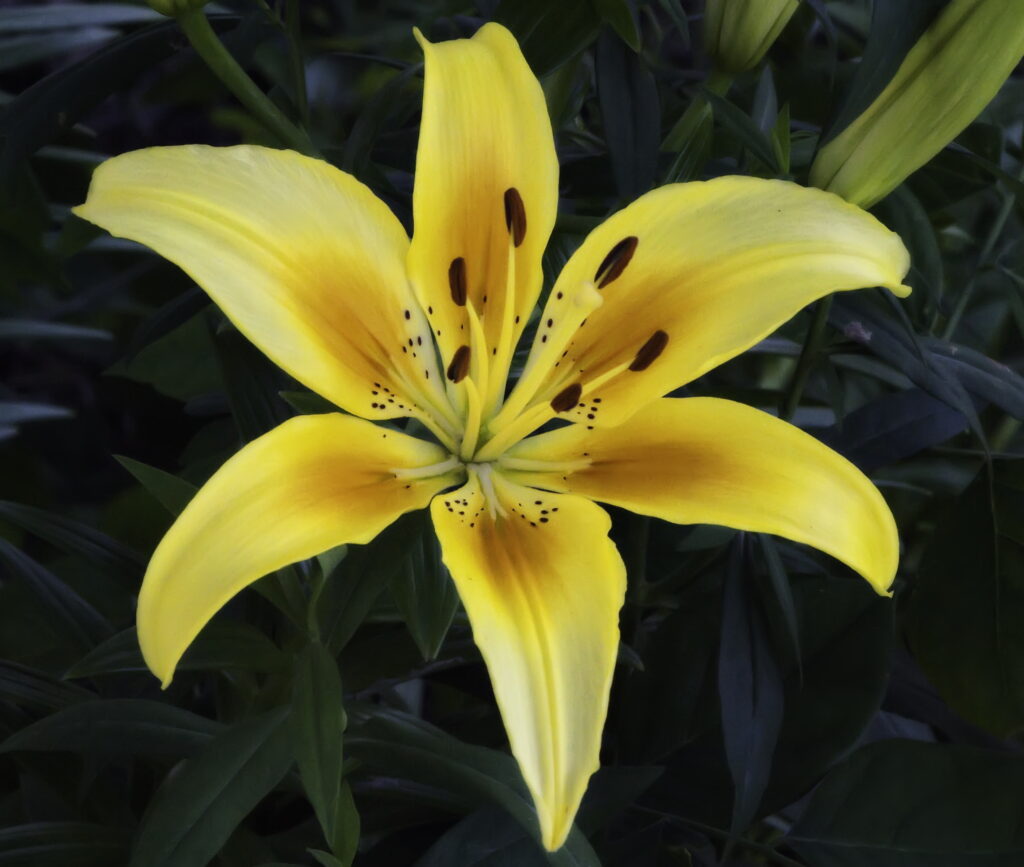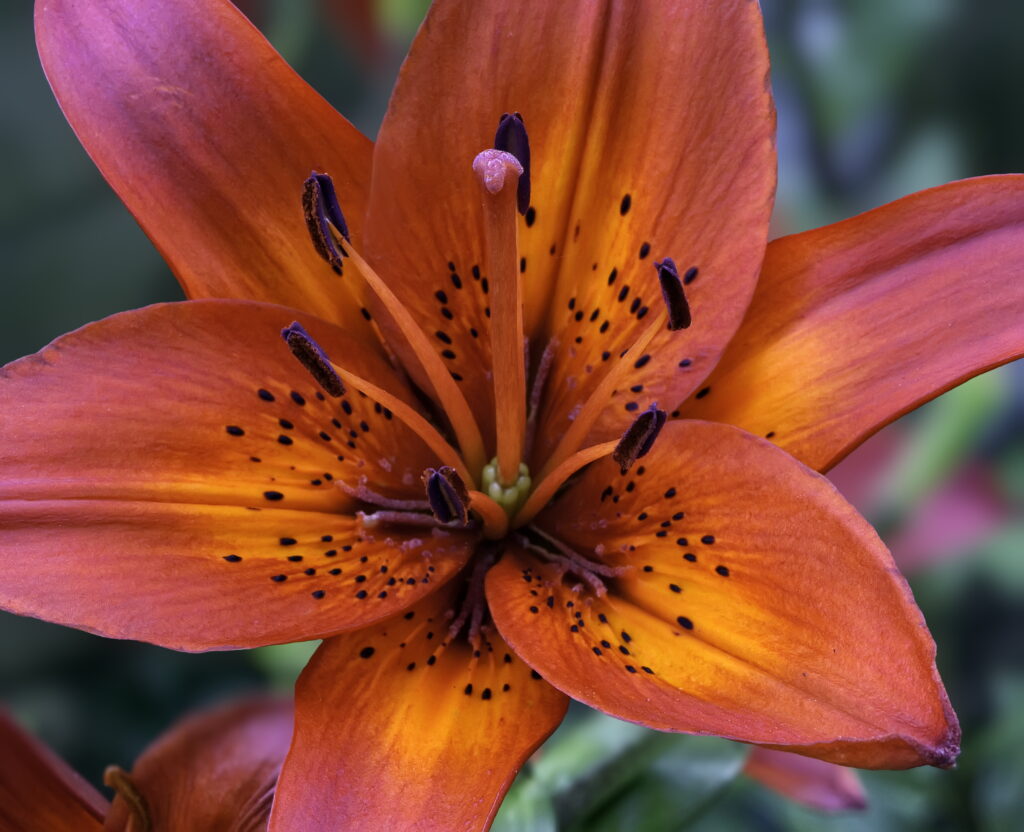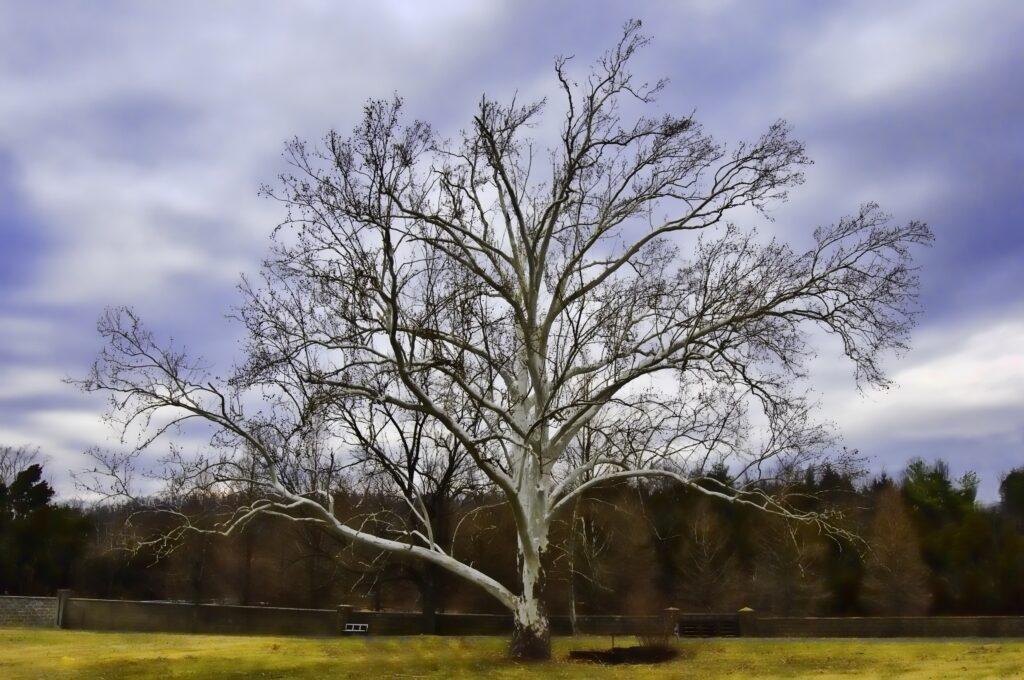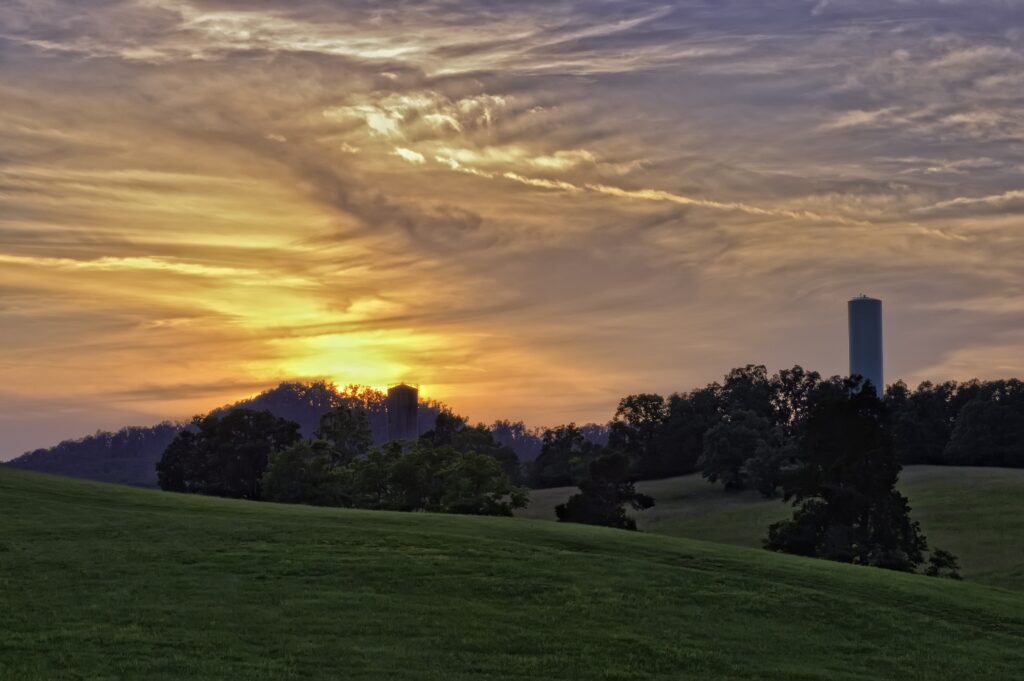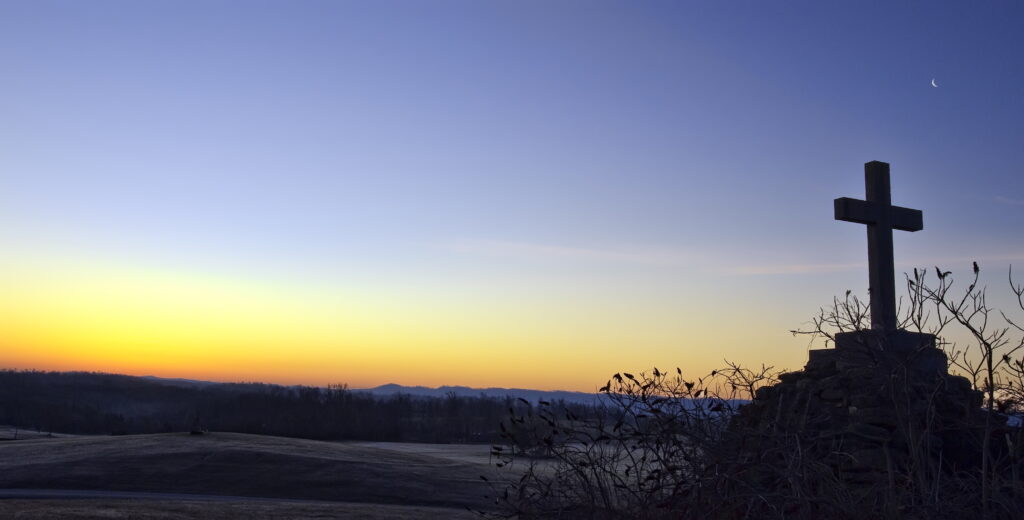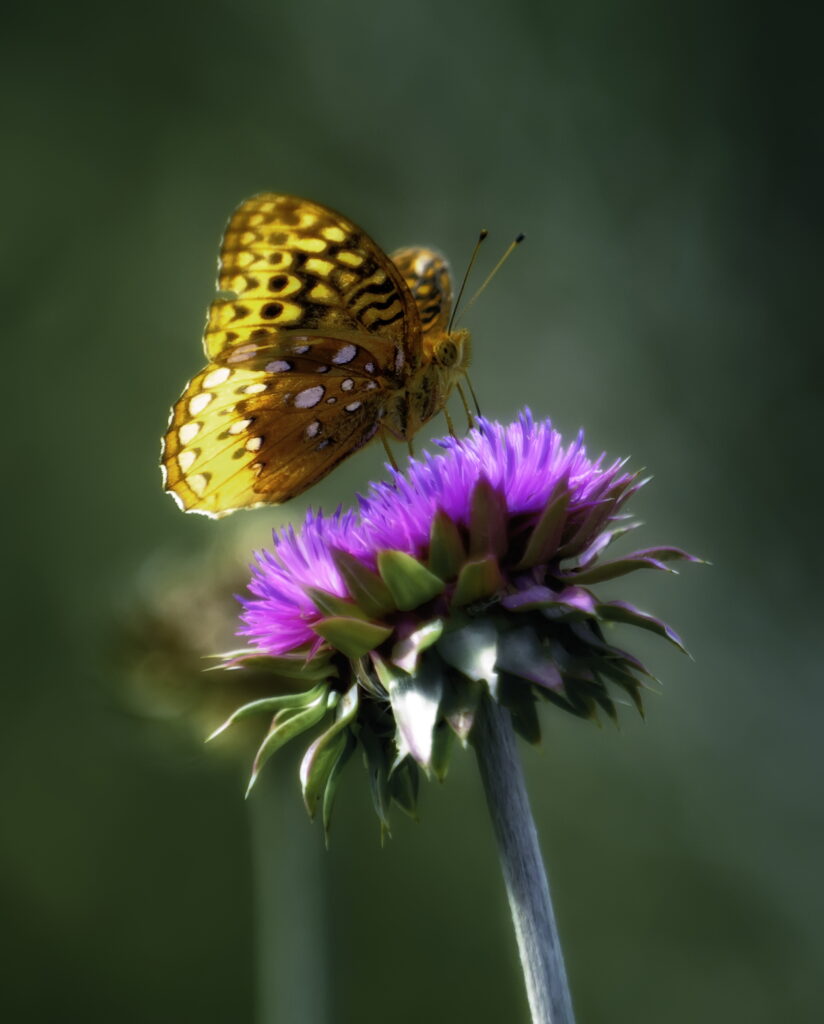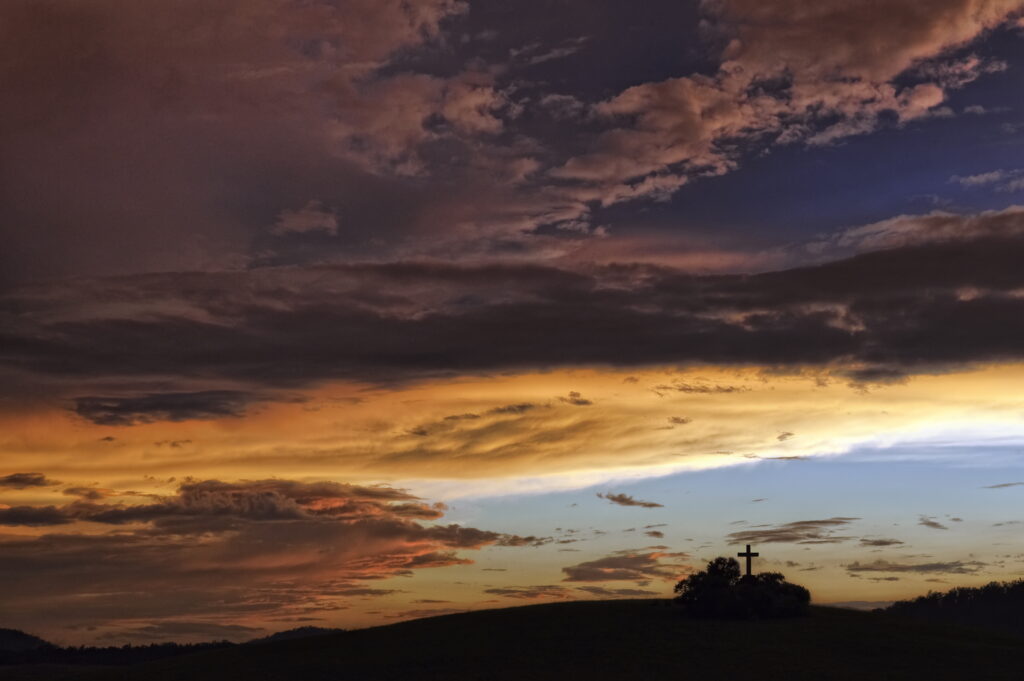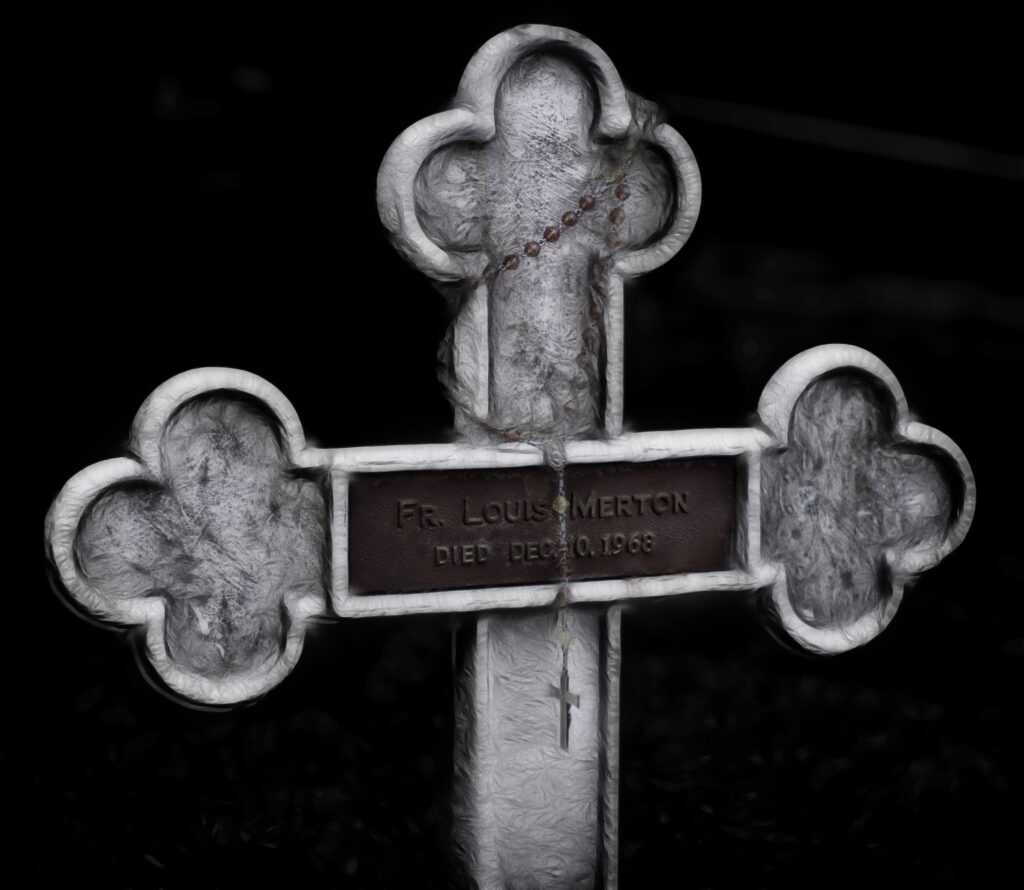Preface
I can hear some who have asked me to write another book exclaiming, “Holy smokes, he’s writing again…gasp!” It was, I suppose, bound to happen eventually. And while my return to the keyboard is an infinitesimal act in the grand scheme of Life, it feels appropriate at this point in my life. I am not beginning a new book; they’re just too much work, not to mention the drudgery of revising the damn thing over and over with an iron-fisted editor (I’m not mentioning any names!). Be that as it may, given that this missive has manifested, it seems that I still have enough energy in me for the occasional blog post and consequently, here we are.
In this Part 1, I’ll share several reasons why this article was written, offer a brief introduction of Thomas Merton and his life, followed by the foundation and evolution of my interest in him, and end with some photographs of my time at the Abbey of Gethsemani. In Part 2, I will survey my and Merton’s apparent intersections of consciousness and demonstrate how they’ve influenced my own ongoing voyage of discovery. In Part 3, I’ll examine insights into living a contemplative life, and offer a list of resources should you decide to investigate these topics more fully. I hope that these essays will resonate with you, and perhaps assist you in finding a deeper understanding of these shared traits in your own life and search for Truth. With that said, please join me in this exploration of Merton, me, and the contemplative life.
These blog posts came about for several reasons. First, I’ve enjoyed dipping into the mystical waters of Thomas Merton off and on now for the past 25 years. After recently discovering the Turning to the Mystics audio series that I wrote about in Eli’s August Insights newsletter, I found myself bingeing on Merton again, as he was the mystic studied in the series’ first season. Second, I’ve clearly seen many commonalities between us over the years, which have brought new perceptions and helped me to better understand why I hold a special place in my heart for Merton and his work. Third, I wanted to sample his writings about what contemplation meant to him, as in many ways he speaks for me. On the back cover of my books, Grace Happens and Reflections of Consciousness, it states that I prefer “a quiet, contemplative life,” so I felt that an examination of what this means might be useful for those moving toward the within. Lastly, I hope to show that the contemplative approach to deepening into our Oneness with God – sometimes called the path of the mystic – isn’t reserved for cloistered monks, cave-dwelling hermits, or simple old retirees like me. To the contrary, contemplative living can be a part of anyone’s life. And, while it’s not always easy in today’s hectic world, it is possible and I state this from experience, as I managed to do it even during my career in the hospitality industry where the average work week was 60+ hours and typically included many nights, weekends, and holidays. Admittedly, even with my busy work schedule, I was single without kids. If one is married and/or has kids, making time for contemplative practice may be even more problematic. If this is your situation, just do the best you can to carve out a dedicated portion of the day for your sadhana (i.e. spiritual practice), and remember that the quality of effort is more important than the quantity. And if you happen to be an empty nester, then by all means use your newfound time and tranquility to expand your practice.
Irrespective of one’s busy schedule or roles in life, living the contemplative path isn’t prohibited by one’s outer circumstances because it’s actually about one’s inner orientation. Optimally, this interior alignment is rooted in trust and surrender. As the infinite love, peace, and stillness within is embraced, one then opens to the endless ways that separation consciousness is being dispelled in and as This Moment. When we let go of fears, attachments, and any other limiting borders (i.e. concepts), we inevitably dissolve into the Silence – God’s first language – after which there is only the timeless suchness of Absolute Subjectivity. To be clear, living life as a contemplative doesn’t mean adopting a new identity or lifestyle. There are no religious, spiritual, or philosophical doctrines to adopt and no teachers to deify. It is, quite simply, a Way of Being.
*Note: Moving forward, in all quoted passages by or about Merton, the italics are by the author while any bracketed inserts and bolded text are mine. Also, as most people of his era did, Merton typically used words like “He” or “Man” to denote a reference point for someone’s spiritual life and practice, or when referring to God. Please pardon this, as today’s more inclusive sensibilities did not exist for the most part back then.
An Introduction to Thomas Merton
There is a good chance that people reading this will already know something about Merton (his monastic name was Father Louis), as the amount of available information about him is as wide as it is deep. However, for those who have yet to discover this celebrated 20th century Trappist monk and mystic, he had many notable vocations: author, ecumenist, contemplative, educator, poet, social commentator, activist, spiritual director, hermit, photographer, and calligrapher. But more than anything else, he was a disciple of Christ. In 2015, Pope Francis addressed Congress during his first visit to the United States. He touchingly shared with them that, along with Abraham Lincoln, Dr. Martin Luther King, and Dorothy Day, Thomas Merton was one of the four “great Americans” who most influenced his faith and thought.
Here-Now, perhaps the quality that shines forth from this cultural icon’s legacy more than any other – and a big reason why I feel Merton still has a dedicated following today – is that he was authentic, and thus able to speak to our shared human condition in a relatable way. He never seemed afraid to confess his struggles, contradictions, passions, vulnerabilities, and self-doubt with the world. Fellow monks and friends alike used decidedly diverse terms such as ebullient, learned, dynamic, impetuous, enigmatic, playful, conflicted, down-to-earth, and visionary to describe Merton. In his tribute book, Song for Nobody: A Memory Vision of Thomas Merton, poet Ron Seitz described his comrade as a man for whom “it was all or nothing, now or never … and no-thing or no-body would or could steer him away from his life-long pilgrimage.” And yet, as author John Moses remarked in his discerning 2014 book, Divine Discontent: The Prophetic Voice of Thomas Merton, “He retained an essential simplicity, great personal charm, an inner freedom and a disarming friendliness.” Moses then went on to say, “His openness to life, his intellectual curiosity, his honesty, his restless spirit could not be held in check. He needed to question, to push at the boundaries, to move on. He was ‘everyone’s friend [but] no one’s possession.’”
Among his diverse interests, Merton loved contemporary music. He referred to saxophonist extraordinaire and spiritual seeker John Coltrane’s avant-garde album, Ascension (a reference to Christ’s ascension to heaven), as “…shattering. A fantastic and prophetic piece of music.” He was also known to enjoy live music in Louisville’s jazz clubs, even while living on the Abbey’s grounds as a professed hermit. The man’s contradictions were many, which I can appreciate…because so are mine! Merton was a big fan of folk singer Joan Baez, and the feeling was mutual. In December 1966 she visited Merton at the monastery, and she’s on record (no pun intended) as enjoying his poetry, just as counterculture comedian/satirist Lenny Bruce did. But of all the emerging cultural leaders of the time, I think it’s fair to say that no one impacted Merton more than Bob Dylan. Merton considered him a poet as much (if not more) than a musician, and acknowledged that he was “addicted” to his music. Moreover, in what was a bold admission for a priest, he avowed, “[Dylan] means at least as much to me as some of the new liturgy, perhaps in some ways more.” After hearing Dylan’s epic Blonde on Blonde LP, he proclaimed, “One does not get ‘curious’ about Bob Dylan. You are either all in it or all out of it. I am in his new stuff.”
By the early ‘60s, due to Merton’s literary fame and ecumenism, the Abbey of Gethsemani, located in Kentucky about 50 miles south of Louisville, had become a destination for eminent religious and spiritual figures of all faiths – like Thich Nhat Hanh, John Wu, and Jacques Maritain. Additionally, during this time Merton actively corresponded with well-known icons of his day such as Buddhist scholar and translator D.T. Suzuki, the renowned theologian and philosopher Rabbi Abraham Joshua Heschel, and Indian academic and poet Amiya Chakravarty, who was a close associate of Nobel laureate Rabindranath Tagore. Implausible as this may sound, especially given that he lived in the age of clunky typewriters and snail mail, The Thomas Merton Library at Bellarmine University currently houses some 10,000 letters to more than 2,000 correspondents over a 20-year period! When one adds these to his 60+ books (many published posthumously), his lengthy journals now comprised in a seven-book set, and a prodigious number of essays and poems, I find it hard to imagine how he had time for anything else – but somehow he did!
Longtime Gethsemani Abbot James Fox was generally not a supporter of allowing Merton to attend many of the meetings and conferences that he’d been invited to over the years. It is well-known (and thoroughly documented) that the two men had a complicated and, at times, even adversarial relationship. Fortunately, they seemed to have made peace with each other in the end. When Dom James retired in late 1967, Merton found that Fox’s successor, Dom Flavian Burns, was much more liberal when it came to this area of Merton’s monastic life. Consequently, 1968 turned out to be an eventful year of travel for Merton. He first visited the Trappist monastery of Our Lady of the Redwoods in Eureka, California, and then journeyed to the remotely situated Christ of the Desert Monastery in New Mexico. After briefly returning to Kentucky, he next made short-term stops in New Mexico, Illinois, Alaska, and California, before heading to Asia for an interfaith conference that would be held in a province near Bangkok. About this trip to Asia, which also included visits to India and Sri Lanka, he wrote in his journal, “I hope to find something or someone who will help me advance in my own spiritual quest. I remain a monk of Gethsemani. Whether or not I end my days here, I don’t know – perhaps it is not so important. The great thing is to respond perfectly to God’s will in this providential opportunity, whatever it may bring.”
While attending the conference in December, “God’s will” manifested in a way no one envisioned. After addressing the group, Merton went to his room and without warning died at the age of 53. Although there was no autopsy, the cause of death was presumed to be accidental electrocution from a faulty fan switch. Given his high-profile outspokenness for the civil rights movement and against the Vietnam war, some researchers today consider the circumstances surrounding his death to be shadowy. Their investigations exposed some difficult-to-explain facts that were never considered by the local police or doctors, such as the wound to the back of Merton’s head. Given several baffling anomalies, they theorized that there may have been involvement by the CIA. During these unsanctioned-by-the-Catholic-Church inquiries, three operatives who were active in the region during that time were questioned about whether the CIA partook in Merton’s death. Given their respective responses, you can make of them what you will: 1) “I will neither affirm it nor deny it.” 2) “We were swimming in cash at the time with absolutely no accountability. If there was just one agent who felt Merton was a threat to the country, he could have had him done in with no questions asked.” And most disturbingly, 3) “Yes. And the last 40 years of my life I have been cleansing my soul from what I did as a young man working for the CIA in Southeast Asia in the 1960s.” For their part, the Church has refused to comment on any of this. Owing to the lamentable assassinations of Dr. Martin Luther King Jr. and Bobby Kennedy, 1968 was a grim period. What’s more, unbeknownst to Merton and the Abbey, the F.B.I. had been keeping a file on him since 1958, so it appears that he’d been labeled persona non grata by at least some in the U.S. government. And so, largely overlooked by history, Thomas Merton may well have been the third prominent person that year to be assassinated in what was an exceedingly turbulent time in our nation’s (and world’s) history. Apart from how he passed – and I hold no position on this issue either way – his time on Earth was considerably shorter than most would have wished for. Nevertheless, his influence was as important as it was far-reaching, and I personally feel that Merton’s work is just as relevant today as it was when he was alive.
The Foundation and Evolution of My Interest in Merton
Sometime after the beginning of the new millennium, I became aware of Thomas Merton and his monastery through a CD published in 2000 called, Compassion, which features Christian psalms and hymns along with Tibetan Buddhist music, plus a specially recorded message from His Holiness the Dalai Lama. These two 20th-century luminaries became instant friends during Merton’s 1968 visit to India, and in July of 1996, His Holiness visited Kentucky with two objectives in mind – the first: to participate in what was called an “Interreligious Vigil for World Peace” now known as “the Gethsemani Encounter;” the second: to pray at Merton’s grave. Included with the CD are two beautiful booklets containing photographs documenting the event, together with a brief history of Thomas Merton’s relationship with his Tibetan Brother.
From there, I eventually read the 50th Anniversary Edition of Merton’s famed 1948 autobiography, The Seven Storey Mountain. Remarkably, in a world that was decades away from the internet, social media, and online booksellers, Merton’s book sold 600,000 copies in its first year of publication. Despite its sales in the multi-millions and having been translated into more than 15 languages, reading it was like watching paint dry…it bored me to tears! Through my later investigations into Merton, I found that, as many of us do, he grew immensely over the years, and post-1958 Merton possessed a much more mature and evolved voice. Now, some might disagree with this assessment, and I would of course respect their opinion. All I am saying here is that I found his later books to be far more advanced spiritually, and my feeling is that in large part this conspicuous shift was due to his first major epiphany in March of 1958. Reading his uplifting and inspiring account many years ago (pre-awakening), I thought “how cool.” Reading the same passage again about God’s Grace descending into him (post-awakening), the portion of his satori that immediately grabbed me most was, “It was like waking from a dream of separateness.” Reflecting on my own “Kiss” of Grace back in 2017, this is the fundamental illusion that fell away once and for all, hence my resulting fits of uncontrollable laughter (and tears) that day. The following is Merton’s description of his epiphany:
In Louisville, at the corner of Fourth and Walnut, in the center of the shopping district, I was suddenly overwhelmed with the realization that I loved all those people, that they were mine and I theirs, that we could not be alien to one another even though we were total strangers. It was like waking from a dream of separateness, of spurious self-isolation in a special world, the world of renunciation and supposed holiness… This sense of liberation from an illusory difference was such a relief and such a joy to me that I almost laughed out loud… I have the immense joy of being man, a member of a race in which God Himself became incarnate. As if the sorrows and stupidities of the human condition could overwhelm me, now I realize what we all are. And if only everybody could realize this! But it cannot be explained. There is no way of telling people that they are all walking around shining like the sun.
Over the next eight years, I revisited Merton from time to time and eventually discovered a book by William Paulsell about another monk at the Abbey of Gethsemani by the name of Father Matthew Kelty. During those years, as Merton often did, I too periodically struggled with the desire to somehow be a hermit, and the book’s title, Letters from a Hermit, detailing Kelty’s years on a remote island, immediately grabbed me. Ultimately, this book fomented two, week-long personal retreats at the Abbey in 2009, the first in February and the second in June. The peaceful vibrations of the monastery and its expansive grounds was truly amazing, and I very much enjoyed chatting with some of the monks, including Father Kelty (age 93 at the time), who graciously autographed my copy of this unique book which recounts his eremitical sojourn.
In 2017, a few months prior to my awakening, I came across a wonderful audio series on Sounds True by James Finley called, Thomas Merton’s Path to the Palace of Nowhere: The Essential Guide to the Contemplative Teachings of Thomas Merton. This again renewed my interest in Merton, and over the last few years I’ve read more of and about Merton than ever, as his ecumenical work and observations on contemplative living have spoken to me very deeply.
During both my visits to the Abbey, I did extensive photo shoots and subsequently gifted my printed favorites to them as a way of saying “thank you” for my stays there. The abbot and guest master both wrote to me a couple months later, stating that the prints had been framed and would be hung on the viewing wall in the library. Needless to say, I was honored, and I’ve included some of these images in this segment for you.
